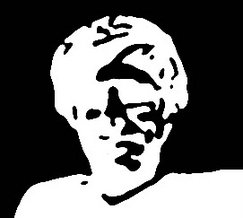Stripping Down #5
 The Avengers United #68 (Panini UK)
The Avengers United #68 (Panini UK)“Once An Invader” by Chuck Austen & Scott Kolins
(The Avengers (v3) #83-84)
“First Blood!” by Jim Shooter & George Perez
(The Avengers (v1) #168)
“The Defeat Of Odin!” by Stan Lee & Jack Kirby
(Journey Into Mystery #110)
Chuck Austen appears to have generated much controversy – even animosity – with his handling of Marvel’s premier super teams, the X-Men and the Avengers. Panini have skipped all but his swansong on Uncanny X-Men, though offering Chris Claremont and Igor Kordey’s consistently awful X-Treme X-Men in it’s stead. With only one current regular US series to reprint, like it or not, Avengers United readers have experienced Austen’s unexpurgated take on Earth’s Mightiest Heroes, which effectively concludes this issue. I wish I could say it’s been unremittingly bad, but Austen’s two story arcs have been a frustrating mix of strong storylines and poor characterisation. The latest serial, focusing on the rebirth of World War II superteam The Invaders as a crack anti-terrorist squad is a gripping exploration of the differing ideals of the two teams. Perhaps less surprisingly, it’s also a thinly veiled comment on international intervention in Iraq. I’ve come to this storyline arse backwards, as I’ve already read The Invaders series that follows it (see Stripping Down #1) . Whilst preferring Allan Jacobsen’s handling of The Invaders, Austen does a good job, particularly in conveying the team’s dissatisfaction with USAgent’s leadership, as well as Captain America’s conflict with his gung-ho doppelganger. Where Austen fails miserably is with his implausible sub-plot, developing a love triangle between Hawkeye, The Wasp and Hank Pym that is just plain ridiculous. Aside from the fact that Austen ignores previous writers Kurt Busiek and Geoff Johns’ clear build up of a reconciliation between Hank Pym and ex-wife Janet Van Dyne, the writer also seems ignorant of any character developments since the start of the 1980s. Referring to Pym’s breakdown circa The Avengers (v1) #212, where he struck The Wasp, Hawkeye states “I'm not one of Hank’s friends. Not since he hit you.” Odd then, that during Hawkeye’s leadership of the West Coast Avengers, he was an ardent supporter of Pym’s rehabilitation as a member of the team… Only a romantic tug-of-love between She-Hulk, Captain America and Jarvis the Butler could seem less likely! A shame, as there’s a lot to be said for trying to shake up the status quo and take characters in new directions, whilst not being hidebound by continuity. However, it’s a step too far when a writer’s approach renders said characters’ behaviour and motivation completely unrecognisable. Sadly, Chuck Austen’s run will probably be remembered for pissing off long-time Avengers readers and largely displaying a failure to understand – or care about – the characters he is writing.
The archive reprint, showcasing The Michael Saga (or The Korvac Saga or The Destiny Hunt, depending on your preference) makes no such mistakes. Despite an enormous cast – in addition to a large Avengers contingent, the Guardians Of The Galaxy also guest star – the story never feels overcrowded and allows for some pretty intense scenes. As well as the developing sub-plot featuring the eponymous and nigh-omnipotent adversary, the Avengers face an internal threat with the arrival of government liaison Henry Peter Gyrich. Also of note is the brewing animosity between team leader Iron Man and Captain America, which comes to a head this issue. This storyline is arguably writer Jim Shooter’s finest moment and artist George Perez also took his unique visual style to another level here. Starhawk’s ultimately doomed pan-dimensional battle with Michael is truly epic, with an inspired outcome that sets up the inevitable final conflict. As a pre-teen, this was one of the most powerful, edge-of-the-seat superhero serials I had ever read and, over twenty years later, the old excitement was still there as I read it again.
The other regular feature is Tales Of Asgard, focusing on Thor’s youth in the realm of the Norse Gods. They’re perfectly enjoyable short stories, albeit slightly heavy on the moralising and hardly examples of Stan Lee and Jack Kirby’s best work. Despite a modern recolouring job that enlivens the visuals, I fall on the side of the fence that criticises inker Vince Colleta as a workmanlike hack. Even “The King” is prone to Colleta’s knack of draining the energy from the art he embellishes and one can only wonder at how much better it would have been had Joe Sinnott, Mike Royer, even Kirby himself had finished the art instead. Sounds awful, but I found myself idly wishing for Ragnarok whilst reading this issue’s episode…
Panini UK comics website www.paninicomics.co.uk



0 Comments:
Post a Comment
<< Home